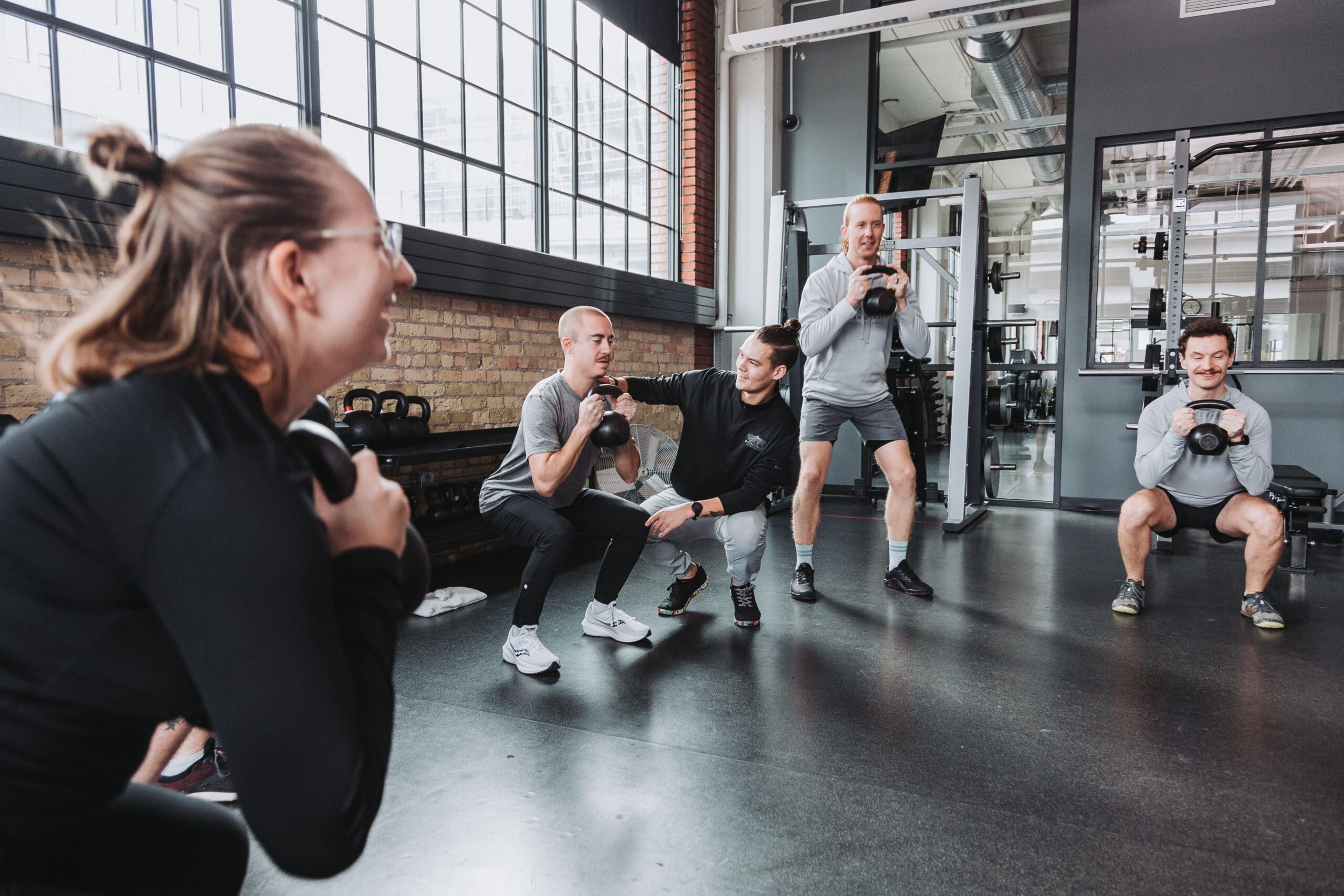
Runners: Why You Should Care About the 7 Human Movement Patterns
September 4, 2025
Date
Category
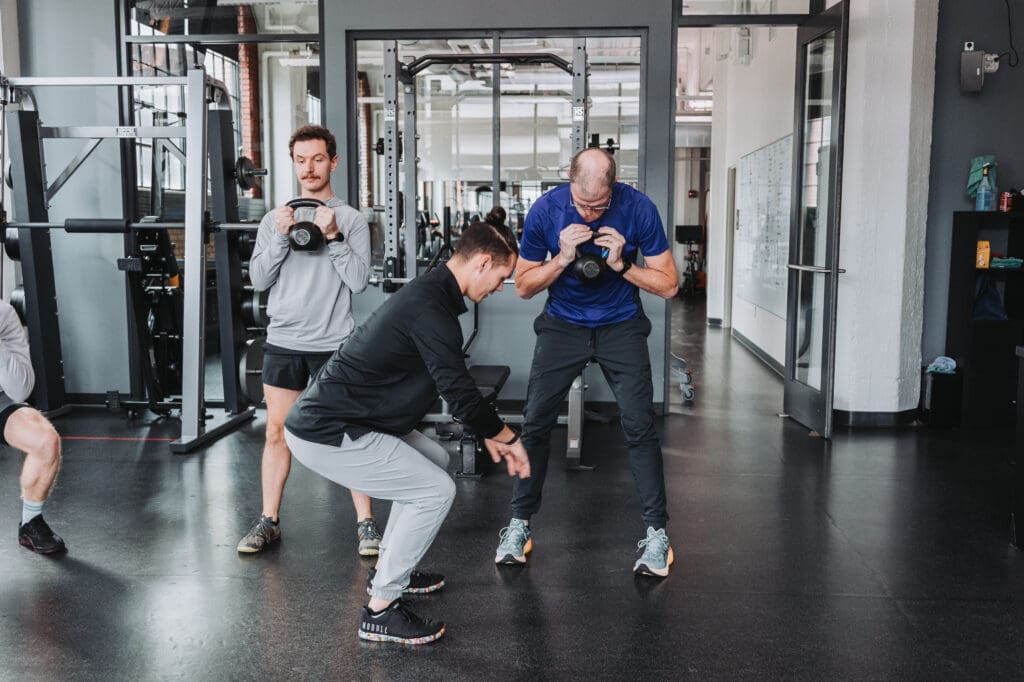
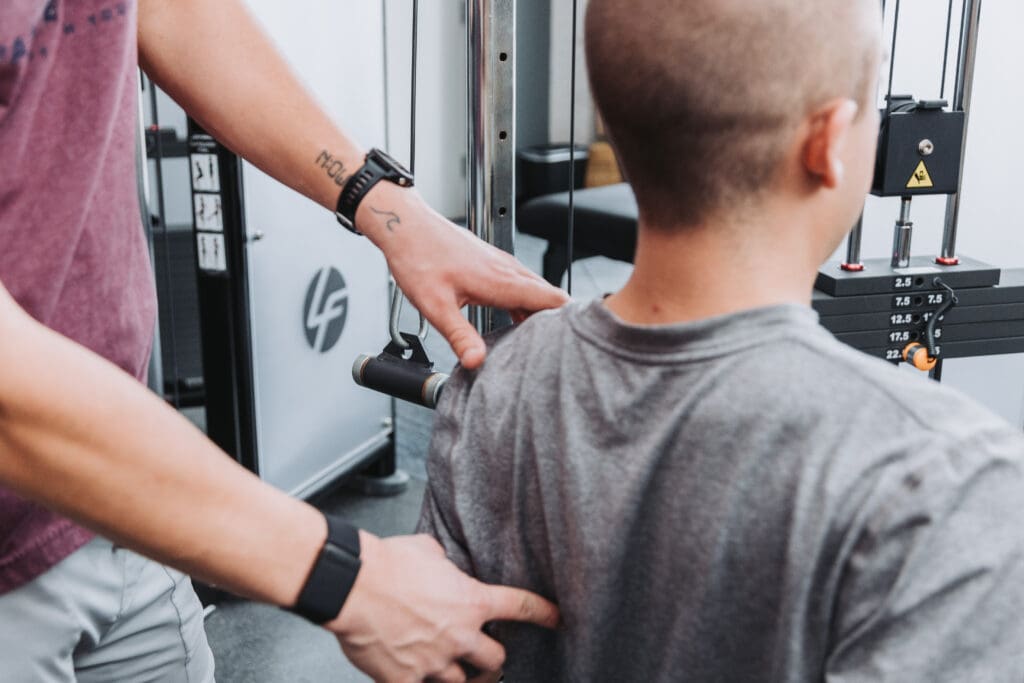

Running isn’t just about running. That might sound strange at first, but it’s true. To run well, to run strong, to stay healthy, and to keep improving, you need more than miles on the road or trails. You need to understand how your body was designed to move.
That is where the seven human movement patterns come in.
Before I dive in, I want to let you know that Kailee and I also recorded a podcast episode and a YouTube video that go deeper into this topic. If you want to hear me talk through these patterns with more examples and context, check those out here:
Now let’s dig in.
The Big Picture
Here are four reasons why runners should care about the seven human movement patterns:
- Running is not just gait. Running is built on all seven patterns.
- The more durable you are, the more running you get to do. Strength training for runners is not extra work, it is injury mitigation and performance work.
- By training the basics, you raise your athletic floor. Running becomes easier when your foundation is stronger.
- These patterns do not just serve your running. They help you move well for life, which means longevity both in sport and outside of it.
This is exactly why I build these concepts into Oak Endurance programming. Whether I am coaching local runners here in Minnesota or working with endurance athletes virtually, these patterns are at the core of becoming stronger, healthier, and more resilient.
The 7 Human Movement Patterns
Squat
Daily life: Sitting down, picking something up, lowering into a chair.
Coaching cues: Feet shoulder width apart, knees track toes, spine stays tall, core engaged, spread the floor.
For runners: Builds landing power, quad strength, and overall durability for long miles.
Hinge
Daily life: Bending over to tie your shoes or pick up a bag.
Coaching cues: Soft knees, neutral spine, hips go back instead of down, lats engaged, glutes drive the movement.
For runners: A strong hinge is the foundation of your push off and protects your back during training.
Lunge
Daily life: Walking upstairs, stepping off a curb, kneeling down.
Coaching cues: Ninety degree knees, core braced, spine vertical, front shin stays strong, back knee toward the floor.
For runners: Lunges build single leg strength and hip control, two things you rely on with every stride.
Pull
Daily life: Opening a door, pulling a drawer, hugging someone in.
Coaching cues: Shoulders packed, lats engaged, elbows drive back toward ribcage, glutes and hamstrings stay active.
For runners: Improves posture and backward arm drive, which keeps you upright and efficient deep into runs.
Push
Daily life: Closing a door, pushing a stroller, moving a piece of furniture.
Coaching cues: Glutes engaged, shoulders down and packed, ribs stacked over hips, core braced, finish with controlled extension.
For runners: Supports posture and forward arm drive, balancing out your pull muscles.
Rotate and Twist
Daily life: Turning to look behind you, reaching across your body, rotating in bed.
Coaching cues: Movement begins from the core, spine stays tall, brace as if taking a punch, train both rotation and resisting rotation.
For runners: Builds stability, coordination, and efficiency. Rotation work keeps your stride fluid and protects your back.
Gait
Daily life: Walking, running, carrying groceries, moving from place to place.
Coaching cues: Posture tall, eyes forward, core braced, opposite arm and leg driving together, foot lands under hips, glutes and big toe finish the extension.
For runners: This is running itself. Gait drills like skips, bounds, and carries build coordination, economy, and durability.
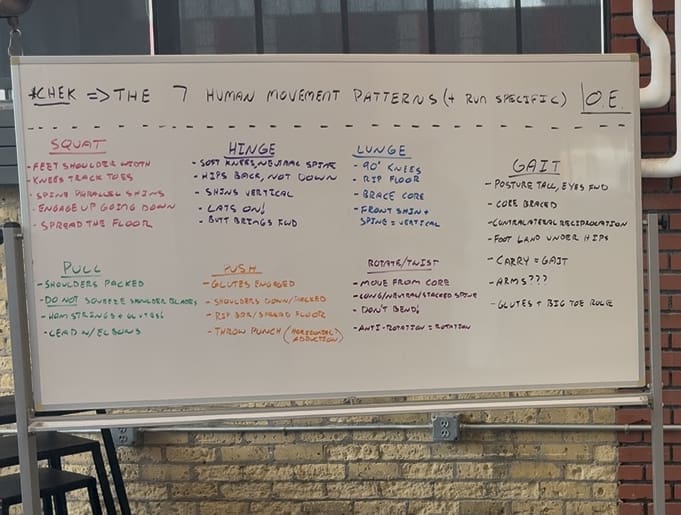
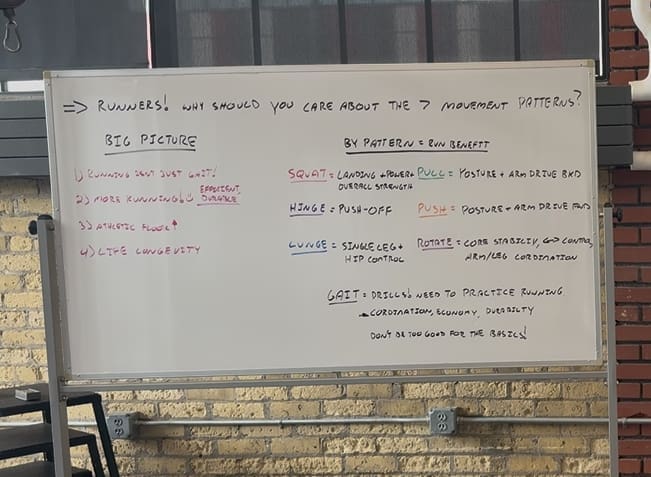
Why This Matters for Runners
When you are at mile 10 of a half marathon or mile 50 of an ultra, it is not just your running muscles that keep you going. It is your squat strength, your hip hinge, your single leg control, your posture, your ability to rotate and stabilize. All of it works together.
This is why I am such a believer in strength training for runners. It is not about lifting for the sake of lifting. It is about becoming a durable athlete who can handle the demands of training and racing without breaking down. It is about injury mitigation and performance.
And when we add tools like 3D gait analysis, we can see exactly how your patterns are showing up in your stride and where your body needs more support.
Final Thoughts
If you are serious about running, whether you are chasing PRs, training for your first marathon, or building consistency year after year, you cannot skip the basics. The seven human movement patterns are the foundation for everything else.
At Oak Endurance, I provide Minnesota run coaching and virtual support for endurance athletes everywhere, helping runners understand how to move well and train smarter. Because running is more than gait. Running is human movement. And when you move well, you run well.
So next time you train, remember this: one squat, one hinge, one lunge, one push, one pull, one rotation, and one gait drill at a time — that is how you build a stronger, more resilient running body.
Blog Post written by Jacob Oak | personal trainer, run coach, and gait analyst that works with endurance athletes through Oak Endurance
close X